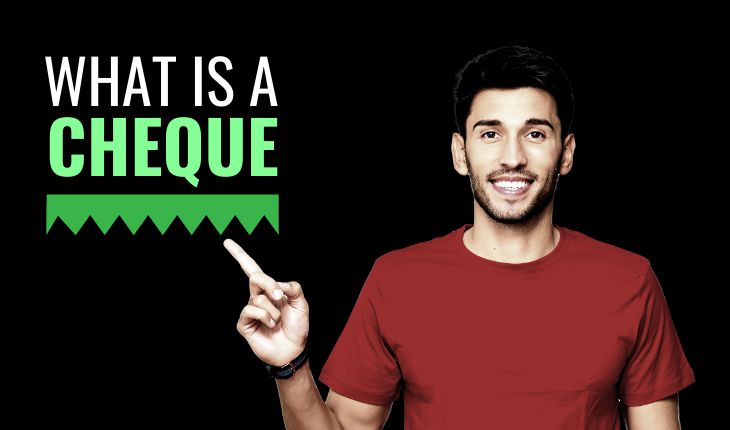What is a Cheque

Last Updated : July 19, 2021, 6:14 p.m.
Get CIBIL Score Instantly for Free and Save around INR 4,800 a Year (Only for Wishfin Customers)
Instant Personal Loan Quotes from 17 Banks and Get the Best Deal
There are various modes of payment used by many individuals in India. Among all the modes of payments, businessmen prefer making payments through cheques. A cheque is a document that orders the bank to pay a specified amount of money from the issuer’s account to another individual’s or company’s account whose name is written on the cheque or for whom the cheque has been issued. It is one of the secured modes of payment because there is no involvement of hard cash. You can also ask the bank not to encash the cheque if in case a signed cheque has been stolen or lost. All you have to do is fill all the details correctly in the cheque before issuing it to someone.
Precautions to Take Before Issuing a Cheque
Before you issue a cheque to anyone, you must remember some important points. All the elements of the cheque should be filled inaccurately.
No Overwriting is Allowed
When you are filling the cheque then remember that you can overwrite any information written on the cheque. If you make an error while filling the cheque and rectify a mistake by overwriting, you will have to sign close to the overwritten part. The signature of the drawer close to the overwritten information will make the cheque valid.
Post-Dated Cheque will not be Encashed before the Due Date
If you draw a post-dated cheque then it will be payable to the payee only on that date or after it. One cannot encash the cheque before the date mentioned on the cheque.
Signature Should Match with the Bank Records
The signature of the issuer should match the signature with the bank. Many people have multiple signatures so, make sure that you have the signature on the cheque the same as it is with the bank’s record.
Write “Only” and a Slash after the Amount
To avoid fraud, you must mention “Only” after writing the amount to be drawn in words. On the other hand, you must use a slash after writing the amount in figures. The Slash and ‘Only’ denotes that it is the final amount so that no one can add up an amount on his own and you become a victim of fraud.
Sign Above Your Name
You will see on almost every cheque that the account holder’s name is mentioned on the bottom-right corner of the cheque. So, make sure you sign just above your name and avoid signing anywhere else on a cheque except near the overwritten part.
Steps to Fill the Cheque
You must follow the steps given below to fill up the cheque:-
- Firstly, write the date on which you are issuing the cheque.
- Secondly, put two parallel at the top-left corner of the cheque if it is an “Account Payee” cheque or else leave the second step if it is a bearer cheque.
- Thirdly, write the Payee’s Name to whom the cheque has been issued.
- Fourthly, write the amount you are willing to pay in figures and put a slash in the end.
- Fifthly, write the amount you are willing to pay in words and put ‘Only’ in the end.
- Finally, sign above your name on the bottom-right of the cheque and make sure you have the same signature on the cheque as it is in the bank.
Parties Involved in Cheque
There are three parties involved when a cheque is issued and they are as follows:-
- Drawer – He is the customer or the account holder of the bank who is issuing a cheque.
- Drawee – A cheque is always drawn towards a particular bank and the bank is liable to pay the asked amount in the cheque to the payee.
- Payee – He is the person whose name is mentioned on the cheque and who will get the payment in cash or his account from the cheque.
Types of Cheques
- Bearer Cheque – The Amount written on the cheque is given in cash to the Payee.
- Account Payee Cheque – The Amount is credited to the Payee’s account and this cheque is not encashable.
- Post-Dated Cheque – This cheque is issued for a future date and it can’t be encashed before the date written on the cheque.
